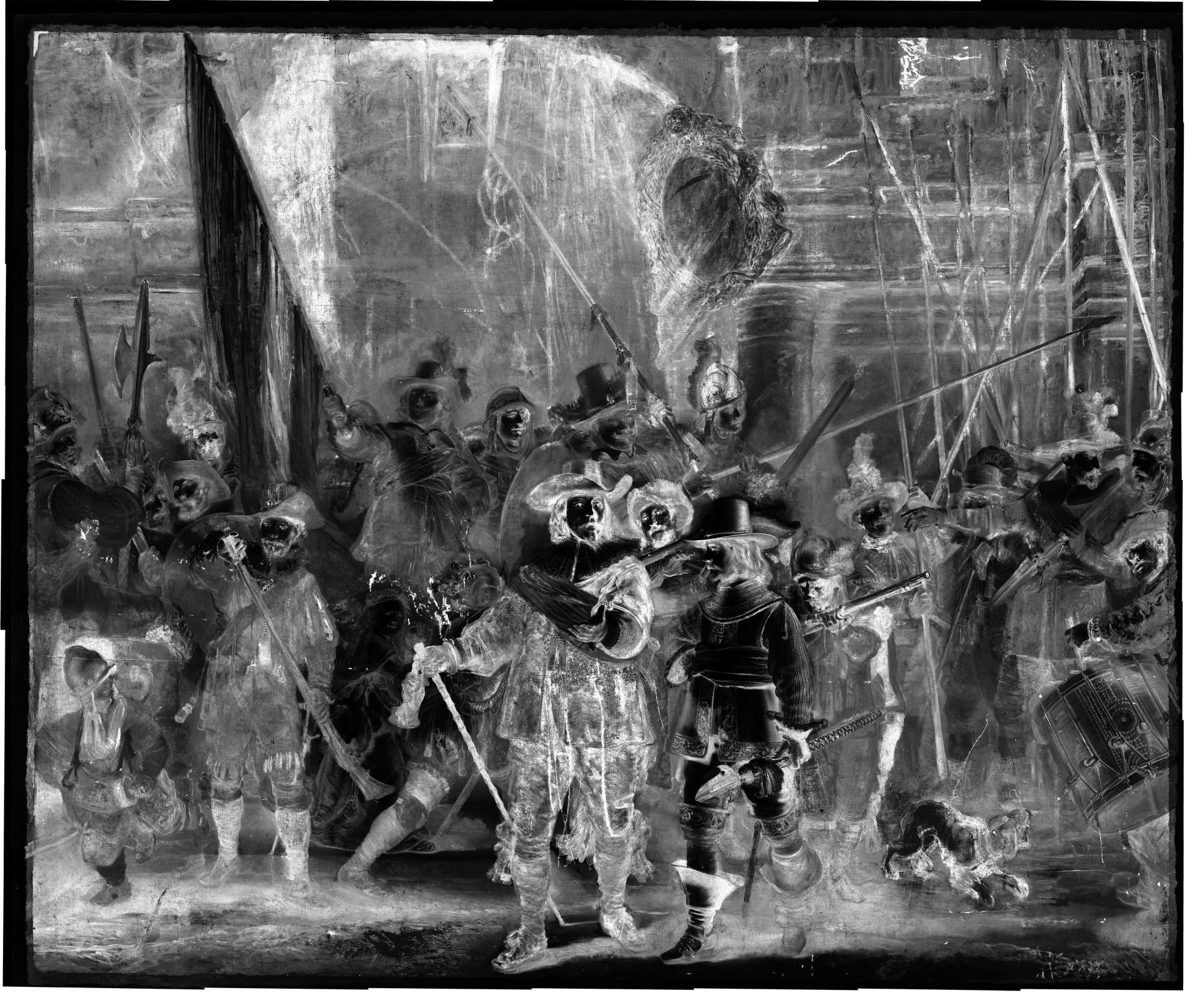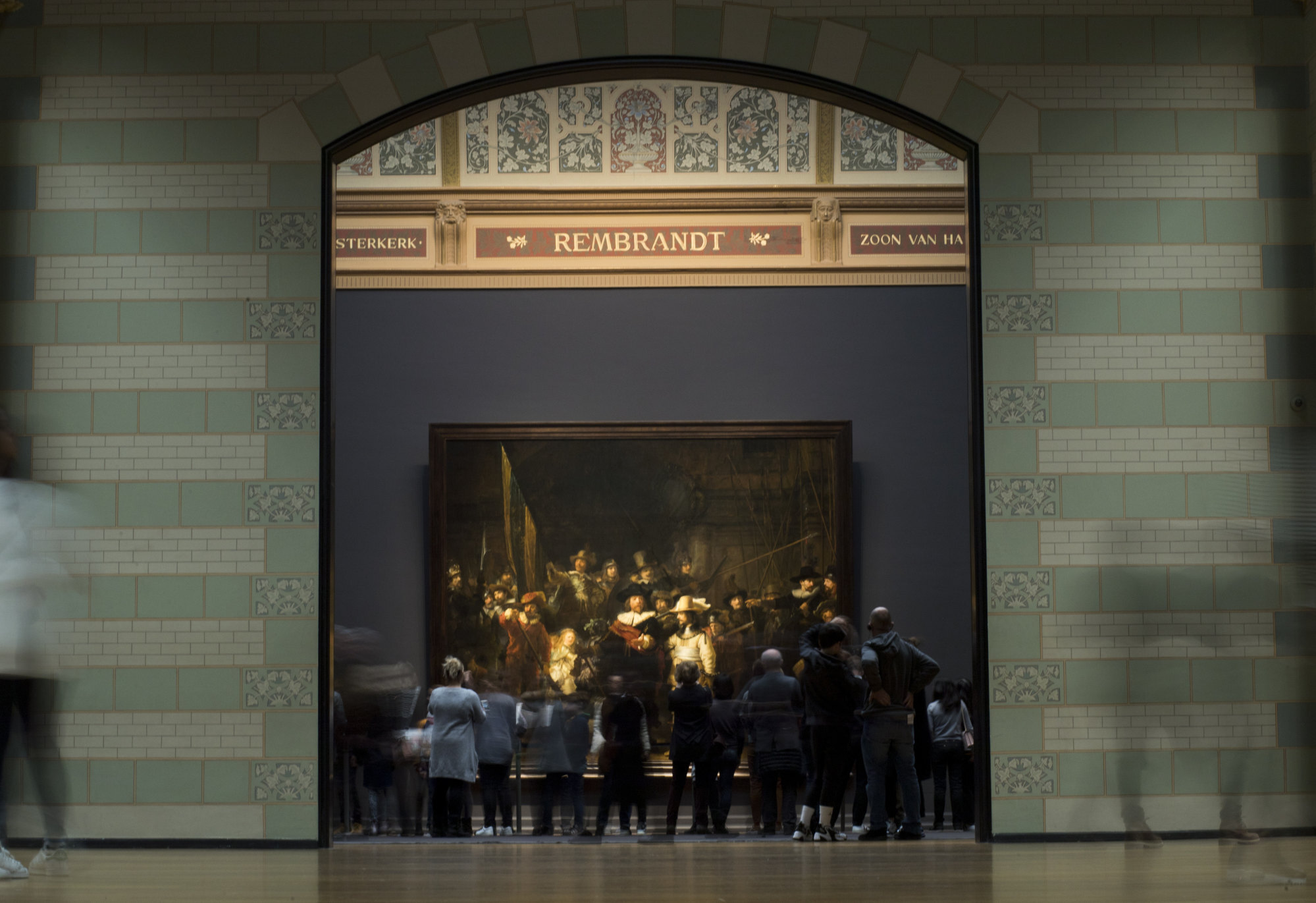
Hidden sketch discovered in Rembrandt’s The Night Watch
- Scans reveal preparatory sketch under paint of Rembrandt masterpiece
- Discovery offers new insight into the Dutch master’s creative process
Experts have uncovered a previously hidden sketch beneath Rembrandt van Rijn’s The Night Watch, affording art historians new insights into how the masterpiece was painted, according to Amsterdam’s Rijksmuseum.
Museum director Taco Dibbits hailed the discovery as a “breakthrough” on Wednesday, presenting the new research into the 1642 painting.
“We always suspected Rembrandt must have made a sketch on the canvas before embarking on this incredibly complex composition, but we didn’t have the evidence,” Dibbits said in a statement.

Researchers at the Rijksmuseum have worked for the past two and a half years on Operation Night Watch, using imaging techniques and computer technology to collect a vast amount of data on the painting.
“This allows us to look over the artist’s shoulder, as it were, and watch as he takes the first steps in the making of a masterpiece,” the statement said.
Van Gogh painting stolen from Dutch museum during virus shutdown
Dibbits added: “We are currently able to look beneath the surface of the paint better than ever before. … We have discovered the genesis of The Night Watch.”
New technologies allowed experts at the renowned Dutch museum to analyse “in minute detail” the materials used by the Dutch Golden Age painter.

The artist applied a brown “quarts” ground and used a beige paint with a high chalk content for his rough sketch, according to the research.
This is the first Rembrandt painting found to have been prepared using this type of paint.
The operation claims to have set a new standard for the study of painting.
Commissioned by the Amsterdam Riflemen’s Guild, the 3.63-by-4.37-metre painting is considered Rembrandt’s major work. Its full title is “Militia Company of District II under the Command of Captain Frans Banninck Cocq”, but it is commonly referred to as The Night Watch.
Botched Buddha added to our list of world’s worst restorations
In other Rembrandt news, the Netherlands wants to spend €175 million (US$200 million) on an important painting by the artist and thus bring it to Amsterdam.
The owners – the Rothschild family – have agreed to the offer, the Dutch news agency ANP reported on Wednesday.
The work The Standard Bearer (circa 1636) was already to be sold in 2019, but it was declared a national cultural treasure by the French government. The associated export ban of 30 months now expired without the Louvre or any other French museum raising the money to buy it.
“The French now want to grant an export licence on the condition that the work is put on public display,” the Rijksmuseum’s Dibbits explained, adding that the painting is to be shown there in the future.
US$41.8 million Basquiat painting sets new Asia auctions mark for Western art
The Dutch Ministry of Culture is providing by far the largest portion of the sum, 150 million euros. The Rembrandt Association, which has around 16,000 art lovers, is contributing another €15 million. The Rijksmuseum wants to contribute €10 million.
The parliament in The Hague still has to approve the acquisition as it involves tax money.
Rembrandt achieved an artistic breakthrough with the self-portrait The Standard Bearer, which later led to the commission for The Night Watch, the Ministry of Culture explained. This large-format painting is the showpiece of the Rijksmuseum.
In 2015, France and the Netherlands had jointly raised €160 million to buy two Rembrandt works from the Rothschild family – the portraits of the Amsterdam couple Marten Soolmans and Oopjen Coppit from 1634. These paintings have since been shown alternately in the Louvre and the Rijksmuseum.

